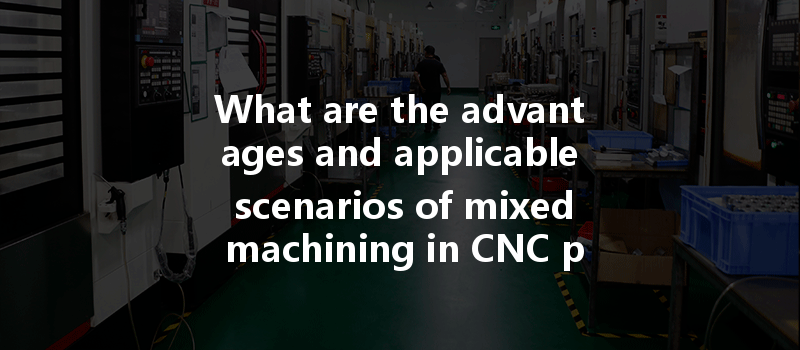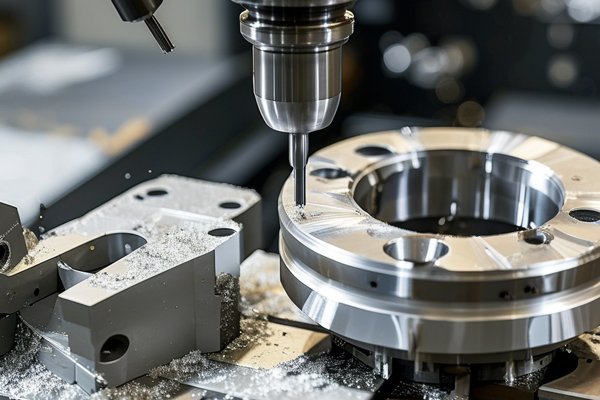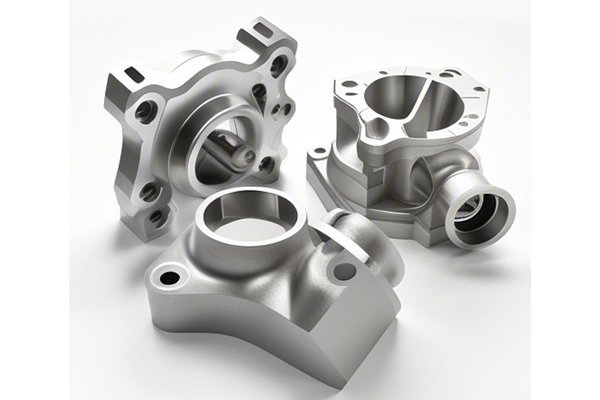Did you know that the global CNC machining market is expected to reach a staggering USD 100 billion by 2026? As industries demand greater precision and efficiency, mixed machining is rapidly emerging as a solution that offers significant advantages across various applications. This blog delves into mixed machining, exploring its benefits, scenarios in which it shines, and how it can revolutionize manufacturing processes.
1.1 Definition of Mixed Machining
Mixed machining refers to the combination of different machining processes—such as milling, turning, drilling, and grinding—within a single operation or setup. By integrating multiple techniques, manufacturers can produce complex geometries and intricate features that would otherwise be time-consuming and costly to achieve.
1.2 The Evolution of CNC Machining
CNC (Computer Numerical Control) machining has transformed the manufacturing landscape since its inception in the 1960s. Originally centered on single machining processes, advancements in technology have paved the way for mixed machining. As industries evolve and adapt, the demand for more versatile and efficient machining processes has never been greater.
2.1 Increased Efficiency
One of the primary advantages of mixed machining is enhanced efficiency. By combining multiple operations into a single setup, manufacturers can significantly reduce cycle times. This allows for faster turnaround on projects, minimizing downtime and increasing overall productivity.
2.2 Improved Accuracy and Surface Finish
Mixed machining enables manufacturers to maintain tighter tolerances and achieve superior surface finishes. Utilizing different processes can help eliminate the need for secondary operations, which can introduce variances and inaccuracies. This leads to a higher quality final product with better aesthetics and functionality.
2.3 Cost-Effectiveness
Although mixed machining may require an initial investment in machinery and tooling, the long-term cost savings can be substantial. By reducing the number of setups and tools required, manufacturers can lower labor costs and material wastage, ultimately driving down production costs.
2.4 Flexibility in Production
Mixed machining offers unparalleled flexibility in production, allowing manufacturers to produce a wider variety of parts without needing extensive reconfiguration. This adaptability makes mixed machining ideal for industries with highly customized or fluctuating demands, such as aerospace, automotive, and medical device manufacturing.
2.5 Enhanced Capability for Complex Parts
Many modern products feature intricate geometries, which can be challenging to produce using traditional methods. Mixed machining allows manufacturers to tackle complex designs that require multiple machining techniques in one cohesive process. This capability expands the horizons of design, enabling engineers to push the limits of innovation.
3.1 Aerospace Industry
The aerospace industry is one of the prime benefactors of mixed machining technology. Components like turbine blades and structural parts often require different materials and machining techniques. By using mixed machining, manufacturers can produce lightweight yet strong components that meet stringent safety and performance standards.
3.2 Automotive Sector
In the ever-competitive automotive sector, mixed machining can provide a significant edge. From engine components to intricate interior parts, the ability to combine various machining processes allows for innovative designs while optimizing production efficiency. This results in lower costs and improved product performance.
3.3 Medical Devices
The medical device industry demands high levels of precision and reliability in its products. Mixed machining can produce complex devices such as surgical instruments and implants that require exceptional tolerances and surface finishes. This reduces the need for secondary operations and ensures better sterility and safety in medical applications.
3.4 Mold and Tool Making
In the mold and tool-making sector, mixed machining can reduce production lead times significantly. By merging milling, turning, and electrical discharge machining (EDM), manufacturers can create molds with complex cavities and features while ensuring high accuracy and surface quality—essential for successful mass production.
3.5 Robotics and Automation
With the increasing trend towards automation and robotics, mixed machining becomes a pivotal ally in producing parts that require a combination of different materials and tolerances. Robotics and automation benefit from this method, providing flexibility in manufacturing while ensuring dynamic adaptability to various designs.
4.1 Assessing Your Needs

Before integrating mixed machining into your operations, it’s crucial to evaluate your production needs and objectives. Analyze your current machining processes, identify bottlenecks, and determine the specific advantages that mixed machining can offer your business.
4.2 Investing in Technology
To fully leverage the capabilities of mixed machining, consider investing in advanced CNC machinery that supports multiple processes. Look for equipment that allows for customization and automation to optimize production efficiency and maintain high-quality standards.
4.3 Training and Skill Development
Proper training is key to successfully implementing mixed machining. Ensure that your operators are well-trained in various machining processes and understand how to utilize the capabilities of mixed machines effectively. Invest in continuous education to keep your team updated with the latest techniques and technologies.
4.4 Experimentation and Prototyping
As with any new process, experimentation is essential to refining mixed machining practices. Start with prototypes that explore different techniques and assess the feasibility of production. Gather data on cycle times, costs, and quality to understand how to maximize the benefits of mixed machining in your operations.
5.1 Complexity of Setup
While mixed machining can improve efficiency, the setup process can become complex. Integrating multiple processes requires careful planning and engineering, which may increase the initial setup time and costs.
5.2 Maintenance and Servicing
Mixed machining systems often require specialized maintenance and servicing. It becomes crucial to devise a comprehensive maintenance program that encompasses all integrated processes to prevent unforeseen breakdowns and ensure optimal performance.
5.3 Tooling Considerations
Machining multiple materials and geometries can pose challenges in tooling. Selecting the right tools and ensuring their compatibility with different processes is essential for maintaining quality and efficiency in production.
5.4 Skills Gap
Mixed machining may demand a more skilled workforce capable of managing various processes and technologies. Addressing this skills gap through targeted training and hiring efforts is vital for successful implementation.
6.1 Advancements in Automation
As automation continues to expand, the integration of mixed machining systems with automated processes will become more prevalent. Smart factories equipped with IoT technology will optimize mixed machining operations, increasing productivity and reducing lead times.
6.2 Increasing Customization
The rapid growth of customization across industries will drive the need for mixed machining. As manufacturers are faced with unique design specifications, mixed machining capabilities will support the production of one-of-a-kind components and assemblies.
6.3 Material Innovations
New materials are constantly being developed to meet the demands of modern manufacturing. The integration of mixed machining processes will continue to evolve alongside these material innovations, allowing manufacturers to explore new possibilities and applications in production.
6.4 Sustainability Initiatives
The emphasis on sustainability will influence mixed machining operations, encouraging manufacturers to adopt eco-friendly practices. Techniques that reduce waste and energy consumption will play a pivotal role in shaping the future of mixed machining.
Mixed machining represents a significant advancement in the manufacturing industry, offering substantial advantages in efficiency, accuracy, and cost-effectiveness. By understanding the applicable scenarios and navigating potential challenges, manufacturers can leverage mixed machining to stay competitive in an ever-evolving marketplace.
As the global CNC machining market continues to expand, embracing mixed machining technology can facilitate unique opportunities for growth and innovation. From aerospace and automotive applications to medical devices and tool-making, the versatility of mixed machining is something no manufacturer should overlook.
In summary, mixed machining is not only about integrating different processes but also about creating smarter manufacturing solutions that meet the demands of today’s industries. It is essential for manufacturers and engineers to consider the potential of mixed machining, as this approach could redefine the future of production. Embrace the change, invest in mixed machining processes, and transform your operations for a brighter, more efficient future.






